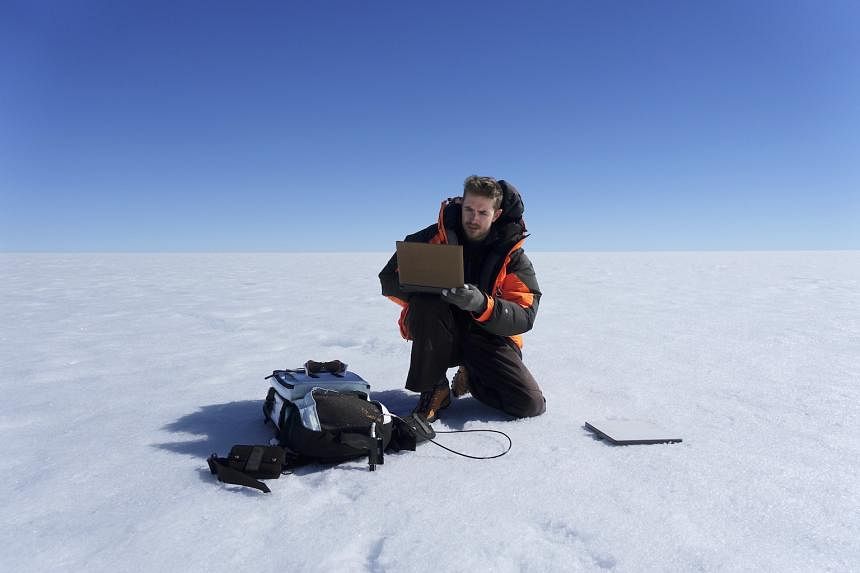Microorganisms, ice sheets and the Antarctic may seem disconnected from the Little Red Dot, but they may have far-reaching effects on the lives of Singaporeans.
With global warming causing ice sheets to melt in Greenland and Antarctica, it is estimated that ocean levels could rise by several metres by 2100, driving over 300 million people from their homes in cities ranging from London to New York, and Shanghai to Tokyo.
Although about 9500km divides Singapore from the Antarctic, the island won’t be spared from the issues inflicted by global warming. According to the Centre for Climate Research Singapore, by 2100, Singapore is projected to experience an increase in the daily mean temperature of 1.4 to 4.6 deg C, more intense and frequent rain, and a mean sea level rise of up to one metre. This means the Marina Bay area and other low-lying places could become flooded.
As if this were not worrying enough, these ice sheets are melting at an increasing rate. The cause: Microorganisms lying in the ice sheets.
The common perception is that ice sheets are vast white landscapes. In reality, as human carbon emissions warm the planet, microorganisms continue to bloom and flourish under part of the ice, staining it darker hues of greens, reds, browns, purples and blacks.
Watch below what Dr Joseph Cook discovers about the function of microscopic plant life in glacial melting and its role in climate change.
While the colourful vistas are captivating, they are dangerous because they are accelerating the melting of the ice, and thus hastening sea level rise, said British glacial microbiologist Joseph Cook. He explains: “Large areas of the Arctic and Antarctic are now colourful and dark – and dark things heat up in the sun, so those areas melt faster.”
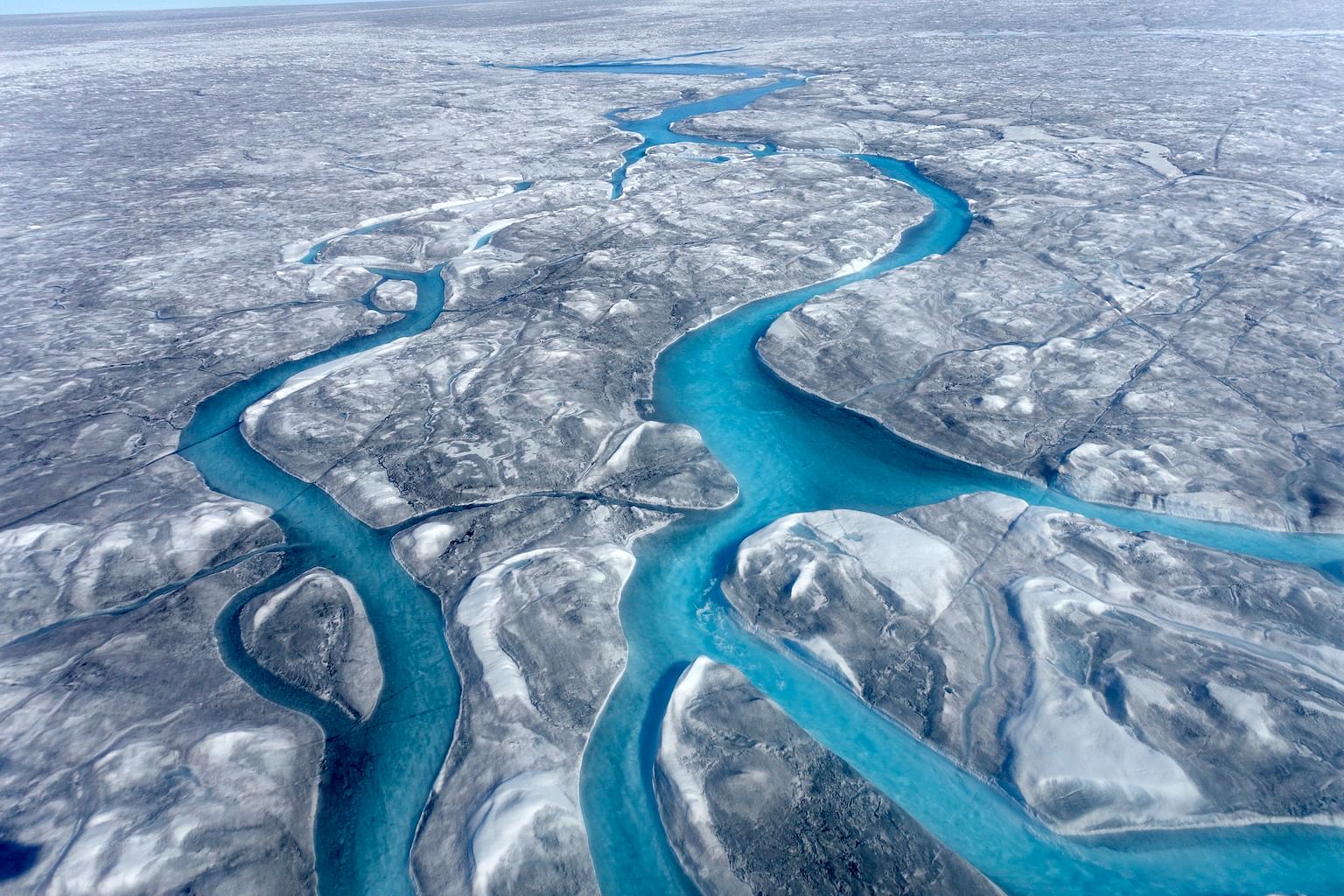
The 35-year-old has been studying biological growth’s role in speeding up ice melt. The flourishing of microorganisms under the ice’s surface could turbocharge the process, especially as algae and other microbial growth is often self-reinforcing.
When algae spreads and quickens the ice’s rate of melting, it releases nutrients and water previously held in the ice, promoting further algae growth.
Dr Cook’s research has shown that, in a part of the Greenland ice sheet spanning about 10,100 sq km, algae is responsible for up to 13 per cent of the surface melting. In some areas, it accelerated melting by up to 26 per cent.
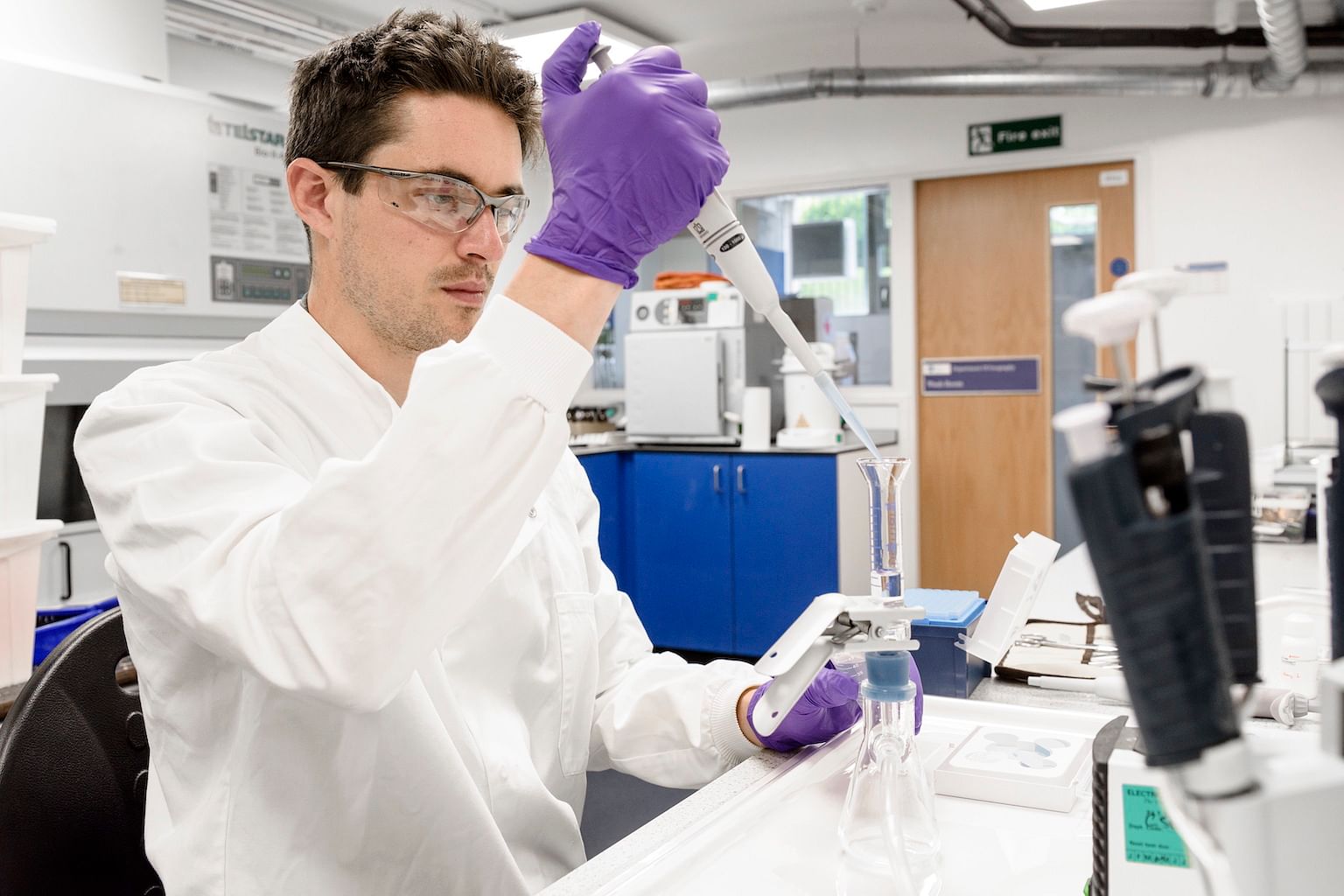
In 2016, Dr Cook was named a Rolex Awards for Enterprise Laureate for his pioneering research in the field of glacial microbiology. The biennial Awards, created in 1976, provides funding and other support for people with exceptional projects to improve life on Earth, expand knowledge, propose solutions to major challenges, and preserve our natural and cultural heritage for future generations.
His project is in line with the Rolex Perpetual Planet initiative launched by the company which initially focused on individuals who contribute to a better world through the Rolex Awards for Enterprise, on safeguarding the oceans through a partnership with Mission Blue, and on understanding climate change as part of its association with the National Geographic Society.
An expanding portfolio of partnerships under the Perpetual Planet initiative now includes projects such as the Under The Pole expeditions, pushing the boundaries of underwater exploration; the Xunaan-Ha Expedition, focusing on water quality in Yucatán, Mexico; and the Hearts In The Ice platform, which collects climate change information in the Arctic.
Rolex also supports organisations and initiatives fostering the next generations of explorers, scientists and conservationists through scholarships and grants.
A look at life in ice
With funding from his Award, Dr Cook has embarked on various research projects, including developing a scientific drone and organising expeditions to collect data.
Algae is not the only microorganism wreaking havoc on ice sheets. Another microbe glues together dust particles in meltwater, creating dark deposits called cryoconite. Ice underneath cryoconite melts, forming pits on the ice sheets’ surface. These holes catch more dust, leading to more cryoconites and more ice melt.
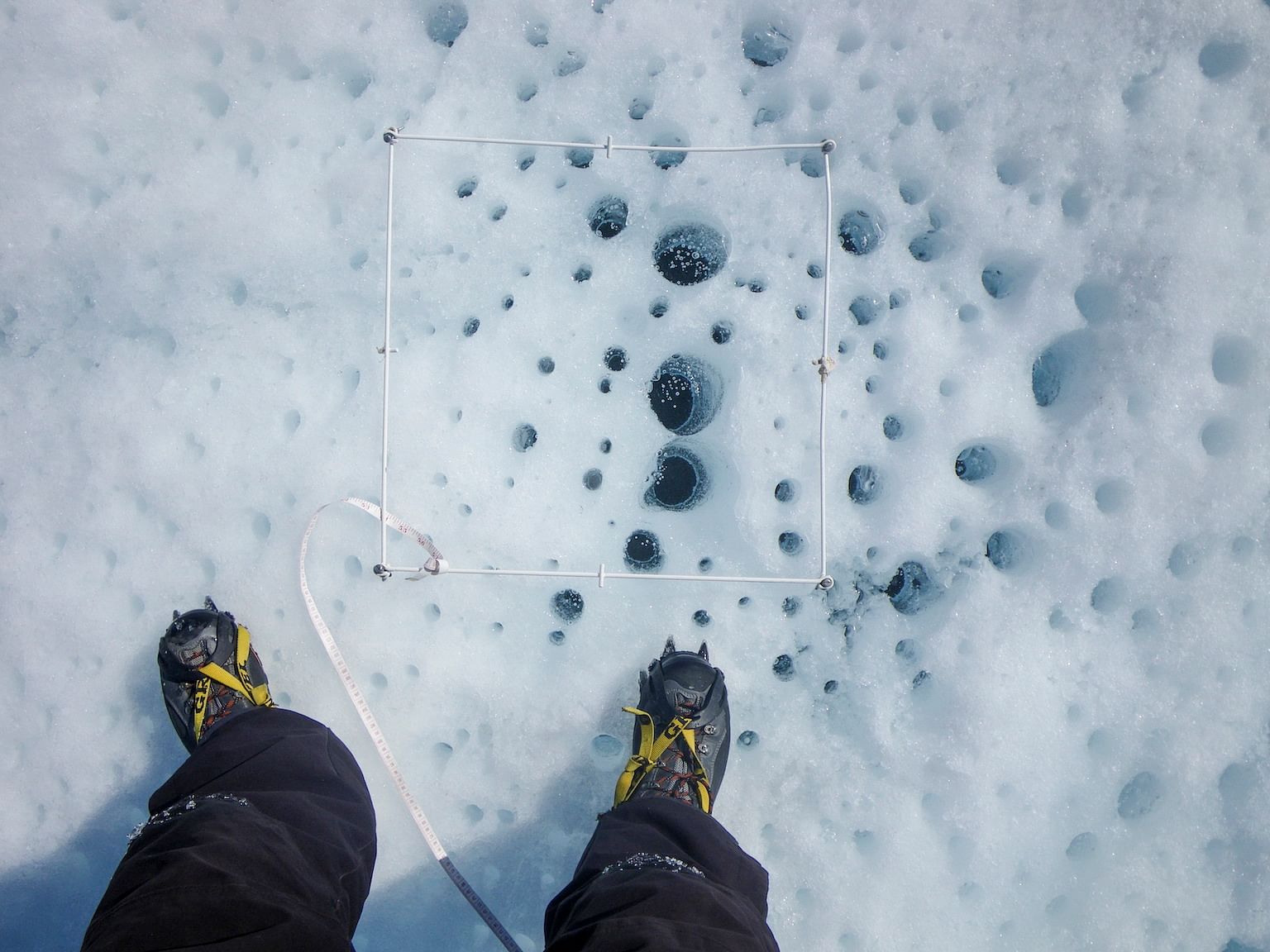
In 2017, Dr Cook led a team onto the Greenland ice sheet to investigate how microbes survive in the hostile environment, and their impact on the ice. This included studying cryoconite holes to determine their influence on glacial physics and ecology.
He says: “Greenland is the ideal natural laboratory to study the fundamental processes controlling life on ice that are likely transferable to the mountain glaciers that are expected to disappear completely within decades.
“It’s estimated that there are a hundred million billion trillion microorganisms living in the top few metres of Earth’s ice. These tiny organisms are, in my view, both amplifiers of climate change and architects of the ice surface. That’s why we have to understand what they do and how they do it.”
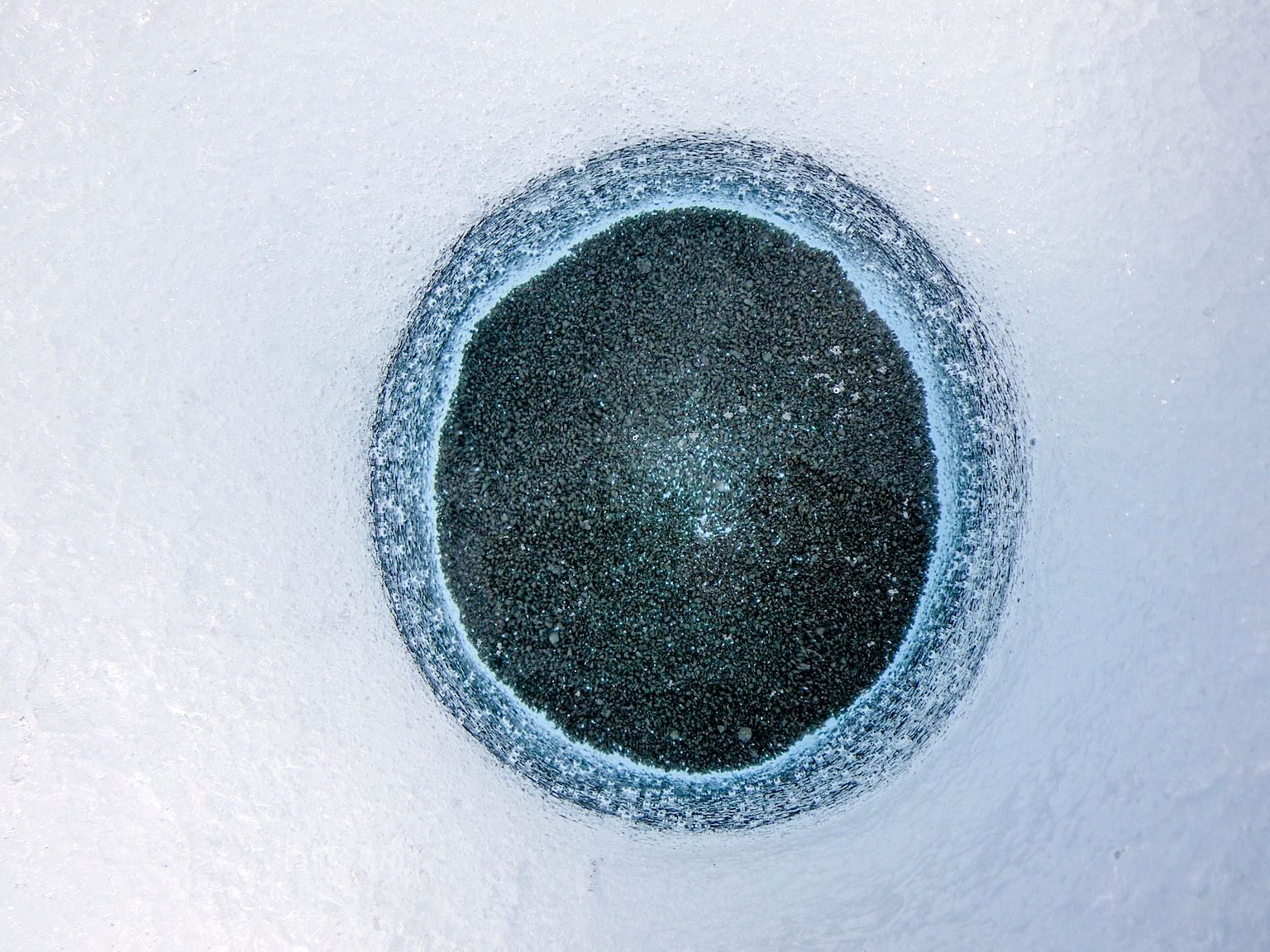
He has also designed and built a scientific drone to survey the Greenland ice sheet’s remote expanses, on which no human foot has ever tread.
“If we can use drones, planes and satellites to see what processes are causing the (ice sheets’) darkening, we can start to build a model that can project that darkening into the future. With that knowledge, we can start to think about how to mitigate or how to reduce that risk.”
Working together for the future
As Dr Cook continues his research, he is also sharing his findings through films, talks, articles and museum and art gallery exhibitions, to highlight the hidden danger of the teeming microbial life in the ice sheets.
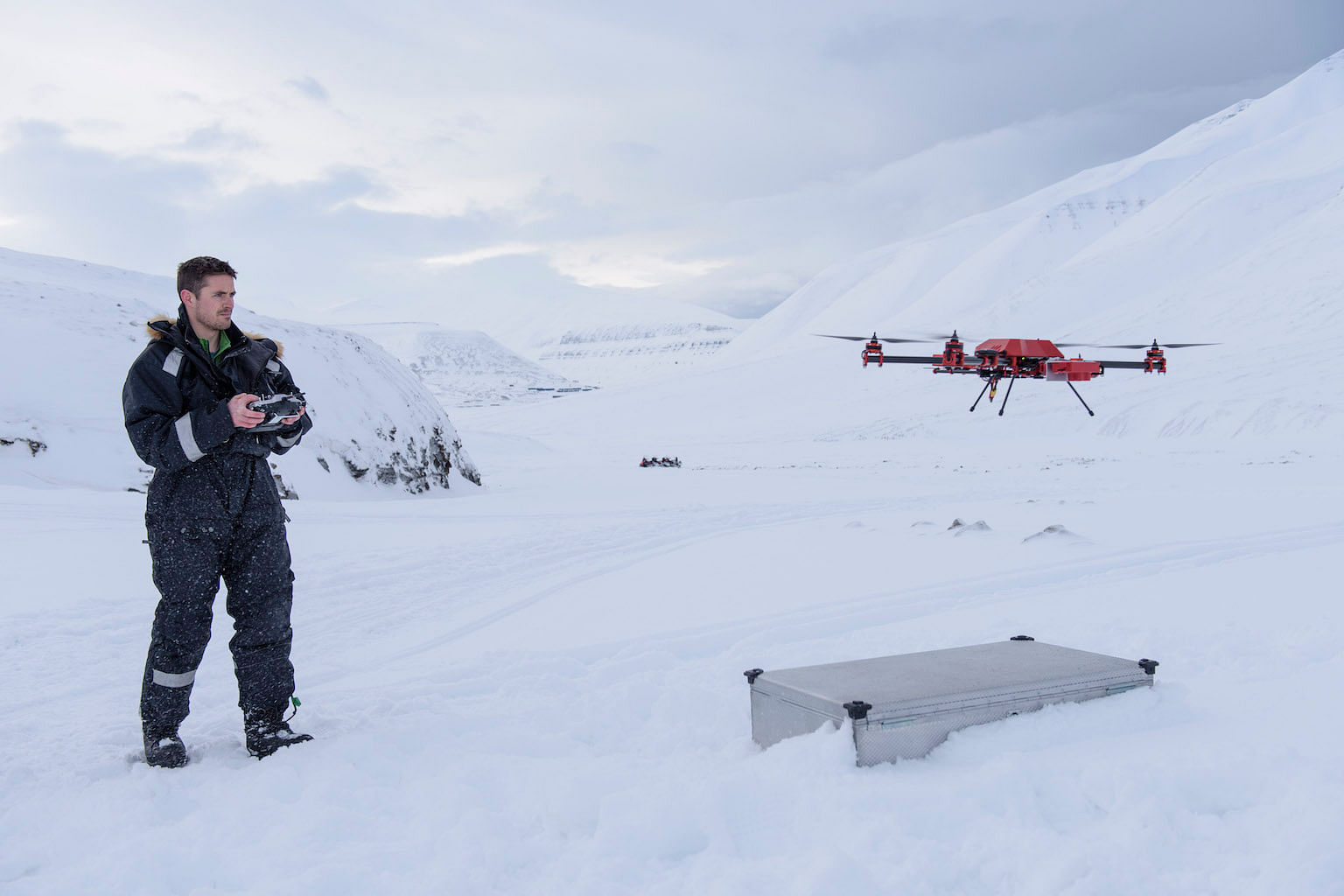
He spent part of his Rolex Awards’ funding to make a 20-minute documentary, titled Ice Alive, to explain how microorganisms are contributing to the melting of ice sheets and glaciers across the world.
In 2018, he also collaborated with Italian geologist Francesco Sauro, a former Rolex Laureate, on an expedition to explore caves in Greenland’s ice sheet.
“We found enormous cathedrals inside the ice, with liquid water lakes at the bottom even though the surface is frozen solid. We mapped the caves and got some insight into the plumbing system of the ice sheet,” he tells Canadian Geographic, the official magazine of the Royal Canadian Geographical Society.
Such cooperation, especially within the Rolex community, to boost research, share discoveries with the public, and overcome challenges to create a perpetual planet is part of what makes him hopeful about the future.
“Another part is big computational techniques which are now accessible,” he says. “Together, they are yielding massive advances in understanding, combined with a real sense of urgency amongst a community that has the power to do something about it. That gives me hope.”
We The Earth is a partnership between The Straits Times and Rolex and its Perpetual Planet initiative. Rolex Awards for Enterprise Laureate Dr Joseph Cook is a stellar example of the many individuals who are doing their part to solve the issues earth faces.
